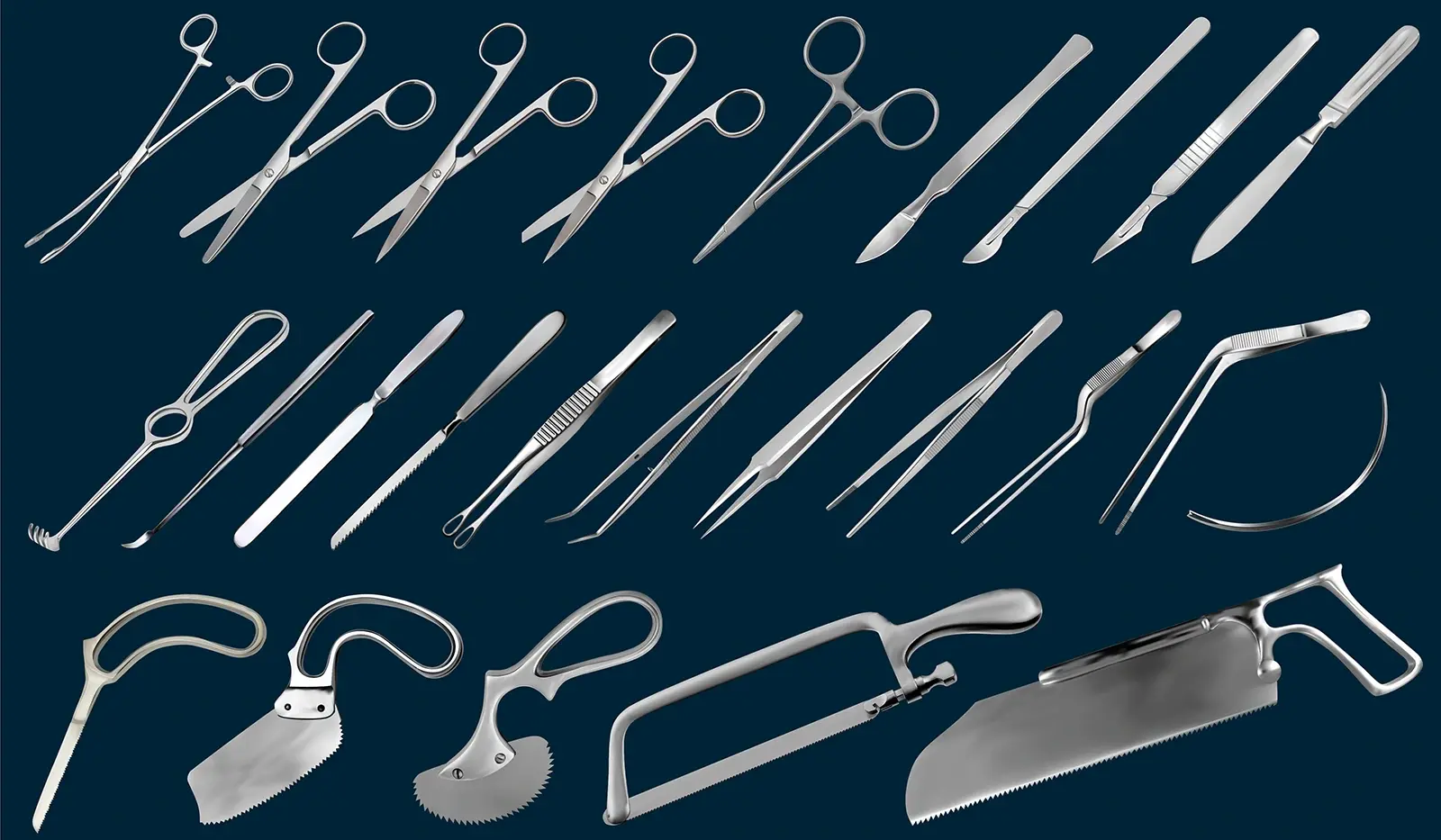3 min read
Automation in medical technology: Ensuring efficiency and quality
 Benjamin Brumm
:
May 12, 2025 1:54:16 PM
Benjamin Brumm
:
May 12, 2025 1:54:16 PM

Medical technology is an industry with a future and good growth prospects. Companies operating in this sector must also meet the high demands for innovation, precision and quality standards. Companies that manufacture surgical instruments or orthopaedic and dental implants, among other things, face an industry-specific challenge due to the strict EU-wide regulations. What's more, international competitive and production pressure is growing, for example due to competition from the Far East.
Can the partial automation of production with the help of robots help to meet these challenges? This article highlights key problems and shows how German and European companies can be supported.
Understanding the challenges
Medical technology companies in Europe, especially in the DACH region, have long benefited from their technological edge and still superior quality. But times are changing.
- Technological advantage is melting away: Suppliers from countries such as China are catching up technologically, which increases the pressure on European manufacturers to increase their efficiency. You only have to look around a trade fair to see this impression confirmed.
- Securing a location in Europe: High labor costs and regulatory requirements present companies with the challenge of securing a production location in Europe in the long term.
- Regulations and standards: The industry is heavily influenced by standards and legal requirements that make production processes more complex and time-consuming. Just think of the European Medical Device Regulation (MDR). Depending on the product, the transition periods for implementation end between 2026 and 2028 - many details are still unclear. 1

- Sensitive focus on quality: Unlike in other industries where the availability of machines is key, precision and quality are paramount in medical technology.
- Automation of sensitive components: Implants and surgical instruments require precise processing and the safe handling of small, often sensitive components.
One positive aspect for the industry is that demand for medical products is less dependent on the economic situation than for other goods. Nevertheless, manufacturers must make their processes future-proof in order to maintain their competitiveness.
How automation addresses these challenges
The implementation of robotic automation can help to overcome these challenges in various areas without compromising quality standards.
Increasing efficiency while maintaining quality
Robot-assisted automation makes it possible to carry out repetitive and time-consuming tasks precisely and consistently . This reduces errors, saves costs and relieves the burden on specialist staff. Companies that are less experienced in the field of automation in particular benefit from technological progress. The integration of graphics-based programming and AI assistants represents a significant advance in the control of industrial robots and sets new standards for efficiency and user-friendliness.
Handling small and sensitive components
Automation solutions are ideal for the precise handling of delicate parts. Specialized grippers and sensors ensure that implants and instruments are processed exactly according to specifications. This means that high production rates do not result in a drop in quality.
Adaptation to regulatory requirements
By automating processes such as product marking and quality inspection, companies can not only meet regulatory requirements more efficiently, but also gain significant competitive advantages.
Robotic systems can communicate with higher-level systems for this purpose in order to automatically store inspection logs that are relevant as proof: This makes it much easier to comply with standards such as ISO 13485 and the MDR.
Securing the production site in Europe
The higher labor costs in Europe can be offset by the use of automation. Robots work efficiently, can be used flexibly and, with the right hardware and software, can now react much faster to changing production requirements than was the case just a few years ago. This strengthens competitiveness compared to suppliers from low-wage countries.
Examples of automation solutions in medical technology
- Machine loading: Robots take over the precise loading and unloading of CNC or other machines, which speeds up production and relieves the strain on operators.
- Assembly of sensitive components: Robots can precisely assemble tiny components, meeting quality and consistency requirements.
- Quality assurance: Automated inspection systems check manufactured parts for defects and document the results, making it easier to comply with regulatory requirements.
 Conclusion: securing the future with automation
Conclusion: securing the future with automation
Manufacturers in the medical technology sector are faced with the task of increasing their efficiency without jeopardizing the quality of their products. Robot-assisted automation offers a promising solution for this. It reduces costs, increases precision and frees up qualified personnel.
Especially for companies from German-speaking countries, which are under pressure from international competition, automation can help to secure their production location in Europe in the long term. Investing in innovative technologies is not only a competitive advantage, but a necessity in order to remain successful in the future.
By using automation, companies can not only meet the challenges of today, but also prepare themselves for the demands of the future.
Sources
1) https://www.vde.com/topics-en/health/consulting/the-eu-medical-device-regulation-mdr-what-changes